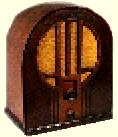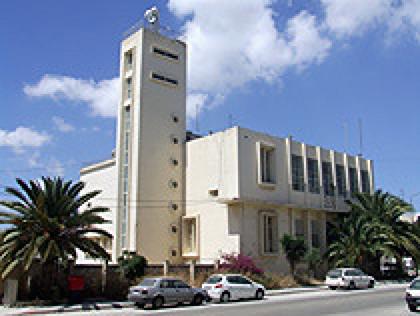

Rediffusion Branches




REDIFFUSION (Malta) Ltd.
Rediffusion House
Guardamangia
Associated Companies in over 175 towns in Great Britain and in Barbados, Bermuda. Canada, Ceylon, Guyana,
Hong Kong, Jamaica, Malaya, Malta, Singapore, South Africa, Trinidad and West Africa etc.
Contact:

Rediffusion House in Gwardamangia.
After taking A levels, I worked for Rediffusion Malta 1959-62 in its well-run Engineering dept. [Memorable names are George Chambers - Chief Eng, Tony Bartolo - Head Eng, Bill Townsend - Network Eng.]
RML had started up in the mid-'30s, and, due to growth, moved in 1957 from a spread of rather-cramped, suburban premises [while separate studios and Accounts were in the capital Valletta], to its purpose-built, modern HQ in Gwardamanga, with all disciplines under the one roof, except for its dedicated workforce of wiremen and fault-clearers who spent 90% time outdoors. They used a sizeable transport fleet of grey & red Ford and Bedford Utility vans all fitted with ladder-racks. Plus a couple of trucks for carrying poles. All wiring was overhead or surface.
Wooden loudspeaker units were overhauled and French-polished in a repair-room.There was a fully-fledged TV service dept with about six engineers.
It was proper, wired (never wireless) broadcasting to the local audience while relaying BBC World service on a companion channel. Subs paid 7s 0d monthly for the availability of two progs at max 0.5W of excellent-quality audio. Advertising brought in extra revenue. Apart from wired-audio rentals, TV-set sales & rentals and antennae installations were catching on by 1960. Reditune (like Muzak) installations were few and far between.
Both sound relay and, later, TV programmes ran scheduled services with commercial spots, from 06:00 to midnight.
I started as a trainee audio engineer, specialising in studio and station maint, mods, prototyping. Our shift duties involved smooth-running of 3 studios, 2 pro recording rooms equipped with 4 EMI BTR2 machines, a SW receiving room with 7+ receivers, a news studio fitted with EMI's latest TR90 consoles, 2 change-over control desks with source selectors, master faders and limiters whose final outputs drove into a large, cooled power-amplifier room [2-channels: max 8 x 2kW and 4 x 2.5kW, but with a quarter left off] and interruptable links to 4-wire regional networks feeding about 55,000 passive units fitted with WB speakers. All studio work was to BBC spec, using PPMs. All in glorious mono, using thermionic technology. We had 2 superb test rooms and an eqpt repair room. Also an in-house carpenters' shop! And stores were well-stocked with a sufficiency of spares (no Just-in-Time philosophy in those days).
In case of rare brown-outs, we had a cartridge-start, diesel 20kW generator on stand-by. Other responsibilities were servicing a 100-extension PABX, a fleet of 6 EMI L2 mini-valve portable tape-recorders for interviews, etc, and a Gent master-clock + 2 busses of slave-clock systems, running off 25V DC accumulators. The studios, using superb local joinery, were installed by local engineers using Central Research Services' valve modules (large aerated, steel shoe-boxes). The mono monitoring amps were by Leak and Quad. There was even an underground (hewn limestone) echo chamber for drama use. There was a 20W VHF link-up with the smaller island, only to be used should the equalised undersea cable develop a fault.
There was an un-manned SW and LW receiving station with tuned antennae systems occupying a few lonely acres, six miles away.
The firm had an OB van with an on-location desk and NAB reel tape-recorders, and ran a busy PA-hire unit.
I recall we once experimented, for a short while, with a third (music) channel, running just 5W as a 'phantom' using centre-tapped 70V line transformers at each end of one 4-w feeder - the adapted receiving box worked but the measured crosstalk figures were invariably poor and therefore unacceptable in long-term practice.
Our Popularity Meter - We injected 28Hz at -12dB into one programme and the ever-variable, reflected load impedance [after LP filtering] was converted to a DC level representing the channel's % listenership - which was logged by a rotary chart/pen-recorder, for working out ad rates! It was quasi-dependable.
In 1960, RML's 25th anniversary, the company chairman at Lower Regent Str was xx Bell-Chambers (his diminutive stature reminded one of Arthur Askey); he visited our building and I believe met every employee there.
Spring 1961: I attended a few courses at the excellent Training School in Poulton-Le-Fylde, Lancs. Technical Authors worked there as well. Did you know our holding company BET Group then also owned the Preston company, Ribble Motor Services Ltd, whose buses ferried us to/from Blackpool Central - our digs were not far away.
I also did practical training in Rediffusion Nottingham's TV-repair workshops.
I was lucky to tour our group's RIS busy factories in Wandsworth, and also to visit Redifon Flight Simulators at Crawley. And I observed tech crews with Associated Rediffusion's TV studios, at Kingsway and at Wembley.
Sad day when our holding company sold these falling empires off and re-invested in a towel laundry empire (Initial) and pest eliminators (Rentokil)
I subsequently moved on as a volunteer, pioneering in its sister company MTV Service in studios 1962-66. There were about twenty of us initially... all those new trades, plus three Aussie TV broadcast engineers and we trained under two studio directors on loan from London.
Originally in makeshift TV studio, presentation, tech area, small props store, were formed from RM's canteen's seating area, fitted mainly with Pye TVT b&w hardware such as 16mm telecines and audio & vision mixers, plus a microwave link to a PAL Band-4 UHF Xmitter 5 miles away. (On opening night only one 4" orthicon camera was to be working!), then after 15 months we moved out to brand-new comprehensive buildings almost next door. I was happy as an audio mixer on all live shows from Day 1 and had access to a boom operator, Genny [who took over my domain when I emigrated to UK].
VTR work was done on lower resolution Ikegami 1" for low-budget programmes. I can remember when an Ampex 2" VTR console arrived, yet no editing was allowed, meaning many inserts, shows and plays could be pre-recorded, either in one take, or later with gaps for ad-breaks.
Some good music and arts progs were made there, sometimes part of a prog's production costs were sponsored.
When I left in Spring '66, I was sad to leave the camaraderie behind - later I furthered my career in high-quality audio in London.
The service upgraded to colour quite late, in about 1977. Sets were very expensive.


Jim Gregory's account of his time working at Rediffusion Malta







